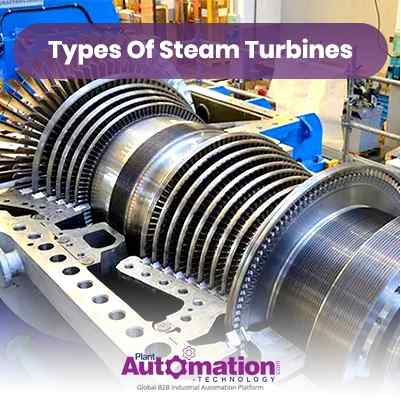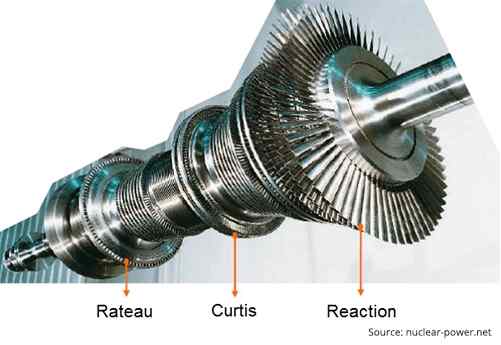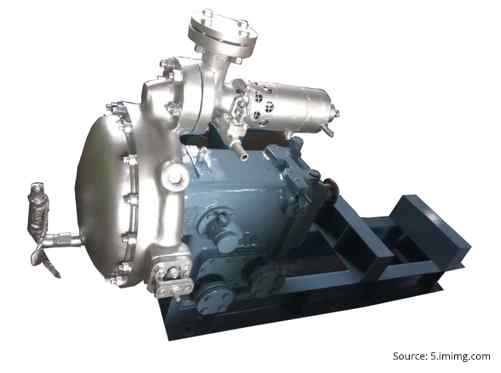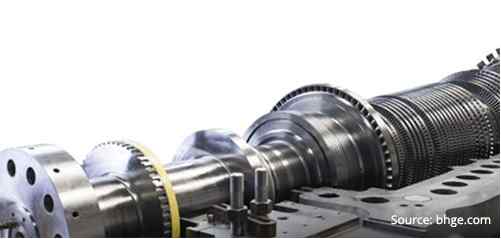Types Of Steam Turbines

The best definition for a steam turbine one could give is the conversion of steam's heat energy to mechanical work, which is done on a rotating output shaft. It's a kind of heat engine machine. Varying from small to large, the turbines are made in a wide range of power capacities. Turbines have many advantages over steam engines. Higher thermal efficiency can be achieved with steam turbines. As there are no rubbing parts, the lubrication is also very simple. These are ideal for large power plants.
Working Principle Of Steam Turbines
The steam turbines work on principle of the dynamic action of steam. Steam coming out from the nozzles strikes the rotating blades, which are fitted on a disc mounted on a shaft. A dynamic pressure on the blades is produced by this high-velocity steam, in which the shaft and blades both start to rotate in the same direction.
| Also Read: How Do Steam, Gas, and Hydraulic Turbines Transform Industrial Automation? |
Depending on their working pressures, size, construction and many other parameters, there are two basic types of steam turbines.
1) Impulse Turbine
2) Reaction Steam Turbine
The main difference in these turbines depends on the manner the steam is expanded as it passes through the turbine.
Impulse Turbine

The steam coming out at a very high velocity through a fixed nozzle, strikes the blades fixed on the periphery of a rotor. Without changing its pressure, the blades change the direction of steam flow. The rotation of the turbine shaft mainly occurs due to the change of momentum. Few examples of the impulse turbine are Brown-Curtis turbine, Curtis turbine and Rateau turbine. De Laval, was the original steam turbine having a single-blade wheel.

Typically varying the degree of reaction and impulse from the blade root to its periphery, modern steam turbines frequently employ both impulse and reaction in the same unit.
Reaction Steam Turbine

As the steam passes over the blades, it expands both in fixed and moving blades in a reaction turbine. There occurs a pressure drop both in moving and fixed blades continuously. This turbine is slightly different from the impulse, where it's composed of moving blades alternating with fixed nozzles. In contrast to the impulse turbine, the pressure drop per stage is lower in the reaction turbine. Reaction turbines are usually more efficient. An example of this turbine is Parson's turbine.

A reaction turbine would require approximately double the number of blade rows as a impulse turbine for the same thermal energy conversion. And this makes the reaction turbine much longer and heavier.
Now that you know how the different steam turbines work, let's have a short glimpse on their differences.
Impulse Turbine
• The blades fixed to the rotor are stricken by an impulsive force.
• When the steam passes through the nozzles, it expands completely and its pressure remains constant.
• The blades are symmetrical in shape.
• Speed is high in impulse turbine, since the velocity of steam is high.
• The number of stages required for producing same power is much less.
• High blade efficiency curve.
Reaction Turbine
• The vector sum of reactive and impulsive force strikes the blades fixed to the rotor.
• The pressure cannot expand fully. Only when it passes through the nozzles and rests on the rotor blades, it partially expands.
• The blades are asymmetrical in shape.
• As the steam velocity is lower in reaction turbine, speed is much lower than impulse turbine.
• To develop the same power, it requires more stages.
• The blade efficiency curve is lower when compared to the impulse turbine.
| Also Read: Why Is Automation Important For Turbines, Fans, And Energy Efficiency? |
Another important aspect regarding the steam turbines is the Steam turbine governing system. Irrespective of variation of its load, it’s a method used to maintain constant steady speed of turbine. The purpose of this would be to supply steam into the turbine in such a way that the turbine gives a constant speed as far as possible under varying the load.







